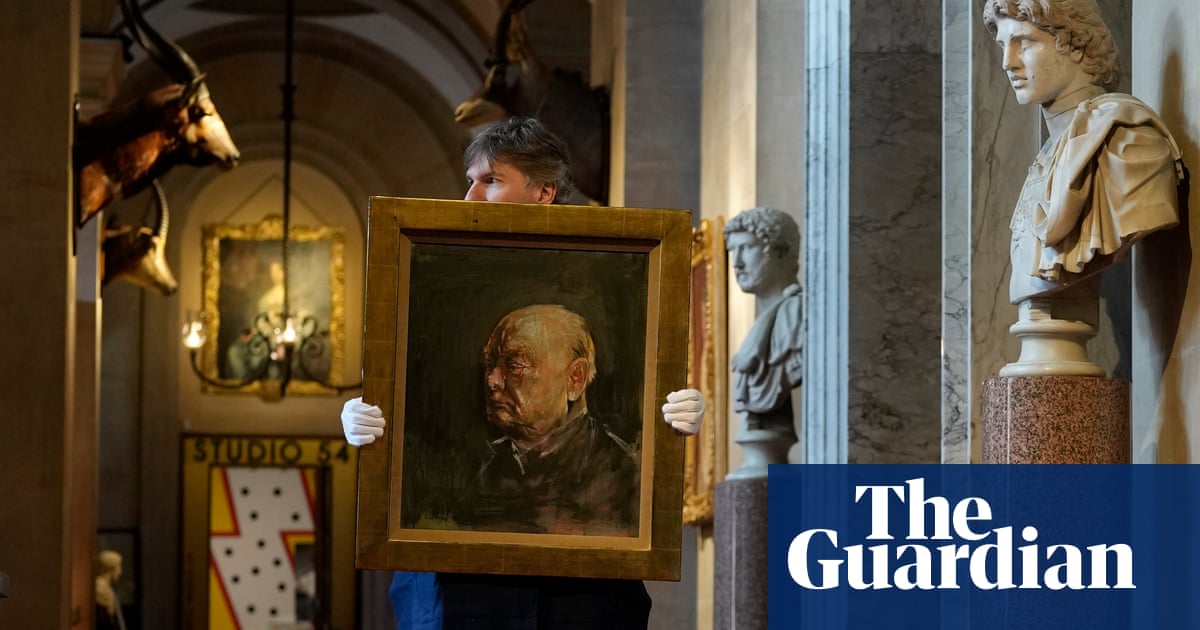
It is one of the earliest examples of a politician accusing the media of fake news. And it illustrates that, despite having been a journalist himself, Winston Churchill had an ambivalent relationship with the press, praising it on occasions, attacking it on others.
Churchill had been incensed by a picture published on the back page of the Daily Herald on 4 June 1929, that showed him outside 11 Downing Street carrying a book with the title War clearly visible. The caption suggested that war was “one of his favourite subjects”.
Churchill insisted the photograph was a fake and ordered Edward Marsh, his private secretary, to write to the Herald’s editor, William Mellor, expressing his outrage.
Marsh’s letter complained: “Obviously your photographer, or someone at your office, has deliberately faked or forged a copy of the photograph which was published in the ‘Daily Herald’ for the purpose of sustaining a prejudicial caption.”
In response to the complaint, the Herald appealed to a rival, the right-wing Morning Post, which had employed a young Churchill as a correspondent three decades earlier.
The Post’s experts examined the materials submitted to them and were “unanimously agreed that they can find nothing in the negative to suggest that it is not perfectly genuine”.
Other newspapers’ photographers had taken similar pictures of Churchill from slightly different angles and, although the lettering was not quite as legible as in the Herald, the title, on close inspection, was visible enough to corroborate the newspaper’s claim that it was genuine.
The book Churchill was photographed with was in fact a recently published anti-war novel. It appears he casually picked a copy up and had forgotten ever having done so.
Churchill declined to apologise for his wrongful allegation and merely thanked the Herald for its “assurance” that the photograph had not been tampered with.
But this was not enough for Mellor, who demanded a complete and categorical withdrawal and apology. Churchill refused to give ground, arguing that the Herald’s “abusive campaign” against him meant there was no “need of making any further amends”. The Herald, however, had the last word, with a cartoon depicting the book it suggested Churchill should read next, entitled The Manners of Gentlemen.
The row between politician and publisher is revealed in a new book, Winston Churchill, A Life in the News, by Professor Richard Toye of the University of Exeter, which shows that bad blood had existed between the two parties for the previous decade.
The left-wing paper had passionately opposed Churchill’s support for the “White” anti-Bolshevik forces in the Russian civil war, when he was secretary of state for war and air.
Churchill, in turn, had issued orders that the War Office was no longer to accommodate the Herald’s journalists because their paper published “propaganda of an essentially disloyal and subversive character”.
“Churchill’s cry of ‘fake or forgery’, and his refusal to back down when proven wrong, is reminiscent of today’s politicians who label criticism of them as ‘fake news’,” Toye said.
“Of course, throughout his career Churchill did, periodically, praise the press as a healthy factor in politics because it drew attention to governments’ shortcomings. But his attack on the Herald was no one-off lapse.”
Toye’s book shows how, as an instinctive showman, and one of the first politicians to be a true global celebrity, Churchill exploited the media to spectacular effect. However, at times he wanted to silence dissent, not always on legitimate national security grounds, because he was nettled by criticism.
The relationship between Churchill and the Herald later improved. In 1936 the paper published articles revealing that Germany was importing huge quantities of materials used to make weapons. Churchill felt that this proved his suspicions about the Nazi regime and referred to the revelations in the Commons, praising the paper for refusing to shield its readers from unpleasant truths.












